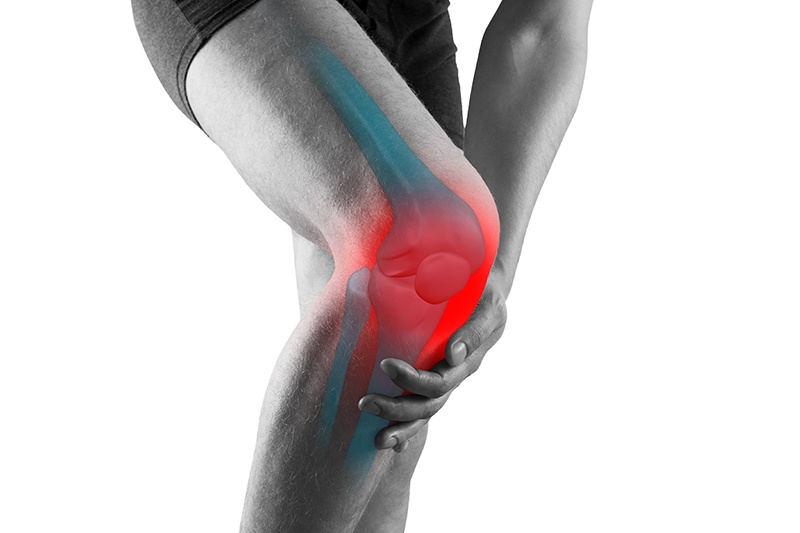
Joint cartilage can bear heavy loads and withstand decades of use, but its exceptional strength doesn’t make it impervious to traumatic injury or disease damage. Unfortunately, cartilage has a limited capacity for self-repair — learn more here.
When you cut your skin or break a bone, your body’s natural corrective mechanisms flood the damaged area with reparative cells and restorative nutrients. Blood platelets seal the cut and promote rapid epidermal tissue healing, and bone marrow stem cells get to work, creating fresh bone cells on either side of the fracture.
With time and support, these tissue types can repair, regenerate, and be as good as new.
But much like the tendons and ligaments that support and stabilize your joints, the articular cartilage tissues that facilitate smooth, pain-free joint movement have few nourishing blood vessels — and a limited capacity for self-repair.
Here, our expert team of board-certified orthopedists at Orthopedic Center of Palm Beach County in Atlantis, Boynton Beach, and Wellington, Florida, explain the ins and outs of articular cartilage damage and degeneration, from causes and symptoms to conservative treatment options and surgical repair solutions.
What is articular cartilage tissue?
Articular cartilage is a tough yet flexible tissue that covers the ends of your bones where they meet within a joint like your shoulder, elbow, wrist, hip, knee, and ankle. Also known as hyaline cartilage, it’s one of five distinct types of cartilage in your body (other types are found in your ears and nose, for example).
With a consistency that’s been likened to linoleum, articular cartilage is lubricated by your joint’s synovial fluid, which helps facilitate smooth, fluid, friction-free movement every time you bend your knee, wrist, or elbow.
Some joints, such as your knee and hip, contain other types of cartilage too. For example, meniscus cartilage within your knee joint helps distribute load more evenly between articular cartilage surfaces; your hip and shoulder joints have a labrum, or a rim of cartilage around the ball-and-socket joint that makes it more stable.
Common causes of cartilage damage
Articular cartilage can bear heavy loads and withstand decades of use, but its exceptional strength doesn’t make it impervious to problems. Causes of cartilage damage include:
- A traumatic impact (i.e., sports injuries, accidental fall)
- Repetitive mild impacts to your joint (i.e., overuse trauma)
- A sudden acute tear (i.e., rapid twisting during activity)
- Progressive, age-related wear and tear (osteoarthritis)
- Poor joint alignment (i.e., congenital abnormality; injury)
- Prolonged joint inflammation (i.e., rheumatoid arthritis)
Articular cartilage damage affects the knee joint most often but is common in the hip, ankle, and shoulder joints as well. Whether cartilage is damaged by injury, trauma, or disease or simply wears away with age, the result is usually some degree of joint pain, stiffness, and dysfunction. You may also experience:
- Swelling, stiffness, and reduced range of motion
- A catching feeling in your joint when you move it
- A crackling or grating sensation during movement
- A feeling that your joint is unstable or may give way
Symptoms of cartilage damage may be so mild you barely notice them, or so intense you can hardly move your joint. In all suspected cases of cartilage damage, a timely, accurate diagnosis and expert care can help you avoid worsening complications.
Treatment options for injured cartilage
Given that articular cartilage has a very limited capacity for self-repair and regeneration, medical intervention is virtually always recommended.
Without treatment, bones may start rubbing directly against each other, causing pain and inflammation that eventually results in the kind of severe, degenerative damage that can only be resolved with a total joint replacement.
Our treatment approach for cartilage damage depends on a variety of individual factors, ranging from the nature and severity of the problem to your age, health, level of physical activity, and desired level of post-treatment activity. We may recommend:
Conservative treatment
Nonsurgical treatment can’t repair or heal damaged cartilage. Instead, conservative care aims to alleviate your symptoms, prevent or slow further cartilage degeneration, improve your range of motion, and restore your mobility. This approach is often used in the initial stage of a cartilage injury, or when arthritis-related cartilage loss is more extensive.
It may involve taking anti-inflammatory, over-the-counter pain relievers, using the RICE (rest, ice, compression, elevation) protocol, avoiding activities that involve heavy use of your affected joint, wearing a brace, taking part in a physical therapy program, or receiving joint injections.
Regenerative treatment
Platelet-rich plasma (PRP) therapy involves injecting a concentrated serum of your own platelets and their healing growth factors into your affected joint. These powerful bioactive substances stimulate the rapid increase of chondrocytes, or cells that help produce new cartilage tissue and the extracellular matrix that helps maintain it.
Arthroscopic surgical repair
There are many instances in which we can surgically repair damaged cartilage. In most cases, cartilage restoration surgery is done with minimally invasive arthroscopic techniques. Common cartilage repair procedures include:
- Microfracture, drilling, and abrasion arthroplasty
- Osteochondral autograft or allograft transplant
- Autologous chondrocyte implantation (ACI)
- Matrix autologous chondrocyte implantation (MACI)
Cartilage restoration treatment can’t address the kind of extensive cartilage loss associated with osteoarthritis, but it can often help resolve cartilage damage inflicted by injury.
To learn more, call to schedule a visit at your nearest Orthopedic Center of Palm Beach County office, or click online to book an appointment any time.





